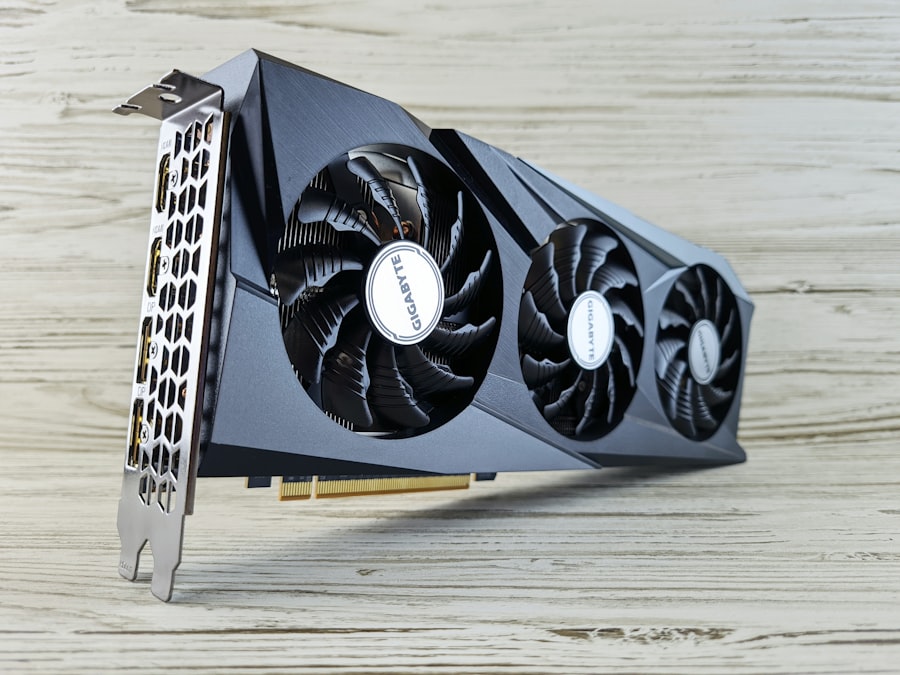Laser hair removal is a popular cosmetic procedure that utilizes concentrated beams of light to target and eliminate unwanted hair. As you consider this option, it’s essential to understand how the process works. The laser emits a specific wavelength of light that is absorbed by the pigment in the hair follicles.
This absorption generates heat, which damages the follicle and inhibits future hair growth. The procedure is most effective on individuals with light skin and dark hair, as the contrast allows the laser to focus more effectively on the hair pigment. Before undergoing the treatment, you will typically have a consultation with a qualified professional.
During this meeting, you can discuss your medical history, skin type, and hair color, which will help determine the best approach for your specific needs. The technician will also explain the number of sessions you may require for optimal results, as hair grows in cycles, and multiple treatments are often necessary to achieve permanent hair reduction. Understanding this process will help you set realistic expectations and prepare for what lies ahead.
Key Takeaways
- Laser hair removal targets hair follicles with concentrated light energy to inhibit future hair growth
- Do follow the aftercare instructions provided by your technician, including avoiding sun exposure and using gentle skincare products
- Don’t pick or scratch treated areas, as this can lead to irritation and potential scarring
- Seek professional help if you experience severe pain, blistering, or any signs of infection after treatment
- Always use sunscreen and protective clothing to shield treated areas from sun exposure, as UV rays can cause pigmentation changes
- Maintain good hygiene and use gentle, non-irritating skincare products to promote healing and prevent complications
- Long-term maintenance may require periodic touch-up treatments to maintain hair reduction results
- Consult a professional if you experience persistent redness, swelling, or any other unusual symptoms after laser hair removal
Dos for Post-Laser Hair Removal Care
Soften and Soothe the Skin
Apply a soothing gel or cream recommended by your technician to alleviate any discomfort or redness that may occur after the procedure. Aloe vera gel is a popular choice due to its natural soothing properties, but your practitioner may suggest other options tailored to your skin type.
Keep the Treated Area Clean and Moisturized
Gently wash the treated area with a mild cleanser and pat it dry with a soft towel. Avoid scrubbing or using harsh soaps, as this can irritate the skin. Keeping the area hydrated will not only promote healing but also enhance the effectiveness of the treatment.
Avoid Irritants and Enhance Results
Consider using a fragrance-free moisturizer to avoid any potential irritation from added scents or chemicals. By following these simple steps, you can ensure a smooth and successful recovery from your laser hair removal treatment.
Don’ts for Post-Laser Hair Removal Care

While there are many dos to follow after your laser hair removal session, there are also several don’ts that you should be aware of to prevent complications. One of the most critical things to avoid is direct sun exposure. Your skin will be more sensitive after treatment, and exposing it to sunlight can lead to pigmentation changes or sunburn.
If you must go outside, make sure to wear protective clothing and apply a broad-spectrum sunscreen with an SPF of at least 30. Another important don’t is to refrain from using any harsh skincare products on the treated area for at least a week post-treatment. This includes exfoliants, retinoids, and products containing alcohol or fragrances.
These ingredients can irritate your skin and hinder the healing process. Instead, stick to gentle, hydrating products that will support your skin’s recovery without causing additional stress.
Managing Side Effects: When to Seek Help
| Side Effect | Common Symptoms | When to Seek Help |
|---|---|---|
| Nausea | Feeling queasy, vomiting | If persistent and affecting daily activities |
| Fatigue | Feeling tired, lack of energy | If severe and not improving with rest |
| Headache | Pain or pressure in the head | If sudden and severe, or accompanied by other symptoms |
| Rash | Redness, itching, skin irritation | If spreading or causing difficulty breathing |
It’s not uncommon to experience some side effects after laser hair removal, such as redness, swelling, or mild discomfort in the treated area. These symptoms typically subside within a few hours to a couple of days. However, if you notice any unusual or severe reactions, it’s essential to know when to seek professional help.
For instance, if you experience blistering, excessive swelling, or signs of infection such as pus or increased pain, you should contact your practitioner immediately. Additionally, if you notice any changes in skin pigmentation that persist beyond a few weeks or if you develop unusual rashes or hives, it’s crucial to consult with a dermatologist or your laser technician. They can assess your condition and provide appropriate treatment options if necessary.
Being proactive about your health and well-being will ensure that any potential complications are addressed promptly.
Sun Protection and Aftercare
Sun protection is a vital aspect of aftercare following laser hair removal. As mentioned earlier, your skin will be particularly sensitive after treatment, making it more susceptible to sun damage. To protect your skin, apply a broad-spectrum sunscreen daily, even on cloudy days or when staying indoors near windows.
Look for sunscreens that contain physical blockers like zinc oxide or titanium dioxide for optimal protection. In addition to sunscreen, consider wearing protective clothing such as long sleeves and wide-brimmed hats when outdoors. This extra layer of protection can help shield your skin from harmful UV rays and prevent any adverse reactions that may arise from sun exposure post-treatment.
By prioritizing sun protection during your recovery period, you can help maintain the results of your laser hair removal and promote overall skin health.
Hygiene and Skincare Routine

Maintaining proper hygiene is essential after undergoing laser hair removal. You should avoid hot baths, saunas, or steam rooms for at least 48 hours post-treatment, as these can exacerbate irritation and increase the risk of infection. Instead, opt for lukewarm showers and gentle cleansing methods to keep the treated area clean without causing additional stress to your skin.
In terms of skincare routine, focus on using gentle products that are free from harsh chemicals or fragrances. Look for hydrating cleansers and moisturizers that will support your skin’s recovery process. Avoid exfoliating scrubs or treatments for at least two weeks after your session to prevent irritation.
By adopting a mindful skincare routine that prioritizes gentleness and hydration, you can help ensure that your skin heals properly while maximizing the benefits of your laser hair removal treatment.
Long-Term Maintenance and Follow-Up
Long-term maintenance is an essential aspect of achieving lasting results from laser hair removal. After completing your initial series of treatments, you may require periodic maintenance sessions to keep unwanted hair at bay. These follow-up appointments can vary in frequency depending on individual factors such as hair growth cycles and hormonal changes.
Your technician will provide guidance on how often you should return for maintenance treatments based on your specific needs. In addition to scheduling follow-up appointments, it’s important to continue monitoring your skin’s condition over time. Keep track of any changes in hair growth patterns or skin texture and communicate these observations with your practitioner during follow-up visits.
This ongoing dialogue will help ensure that you receive personalized care tailored to your evolving needs.
Signs of Complications: When to Consult a Professional
While most individuals experience minimal side effects after laser hair removal, it’s crucial to be aware of potential complications that may arise. Signs such as persistent redness or swelling beyond a few days, blistering, or unusual pigmentation changes warrant immediate attention from a professional. If you notice any signs of infection—such as increased pain, warmth in the treated area, or discharge—it’s essential to seek help promptly.
Additionally, if you experience any allergic reactions or severe discomfort that doesn’t improve with over-the-counter remedies, don’t hesitate to reach out to your practitioner or dermatologist for guidance. Being vigilant about your skin’s response after treatment will empower you to take action when necessary and ensure that you achieve the best possible results from your laser hair removal experience. In conclusion, understanding the laser hair removal process and adhering to proper post-care guidelines is vital for achieving optimal results while minimizing potential complications.
By following the dos and don’ts outlined above and maintaining open communication with your healthcare provider, you can enjoy smoother skin with confidence and peace of mind.
One helpful resource for learning about laser hair removal aftercare do’s and don’ts, as well as when to seek help, is the blog section of the In Laser Hair Removal website. This article provides valuable information on how to care for your skin post-treatment, what to avoid, and when to contact your provider if you experience any complications. For more detailed information on laser hair removal aftercare, you can visit https://www.inlaserhairremoval.com/blog/.
FAQs
What is laser hair removal aftercare?
Laser hair removal aftercare refers to the steps and precautions that should be taken after undergoing a laser hair removal treatment to ensure proper healing and to minimize the risk of complications.
What are the do’s of laser hair removal aftercare?
– Keep the treated area clean and dry
– Apply aloe vera or a soothing cream to alleviate any discomfort
– Use sunscreen on the treated area to protect it from sun exposure
– Follow the specific aftercare instructions provided by the laser hair removal technician
What are the don’ts of laser hair removal aftercare?
– Avoid picking or scratching the treated area
– Do not use harsh exfoliants or scrubs on the treated area
– Avoid hot showers, saunas, or steam rooms for at least 24-48 hours after treatment
– Do not wax, pluck, or use depilatory creams on the treated area between sessions
When should I seek help after laser hair removal?
You should seek help if you experience severe pain, blistering, excessive swelling, or signs of infection such as pus or increasing redness in the treated area. Additionally, if you have any concerns or questions about your aftercare, it is best to consult with your laser hair removal technician or a healthcare professional.





